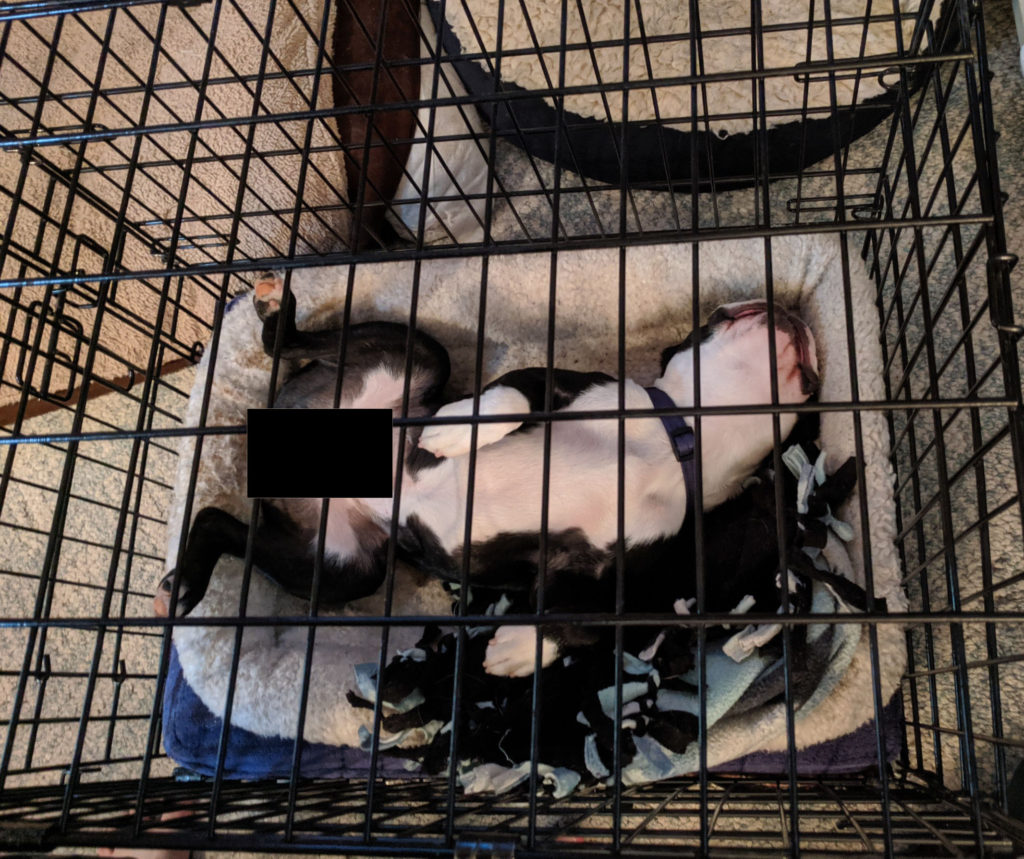Is your dog quiet in the crate? Crate training is probably the best thing that’s happened to dogs in the last couple of decades. It allows dogs to be “good” all the time when learning potty training. Crate training is also valuable in other situations, as we discussed in a very early article.
Many people, certainly at first, were reluctant to use crates or cages. There is still some resistance, but overall most people have come to realize that dogs are most secure, comfortable, and relaxed when in an enclosed, familiar spot.
Why crate training works

The original explanation for crate training theorized that dogs are descended from wolf or fox ancestors, all of which are den animals. They’re most comfortable and secure in cozy dens. It makes sense, even if it’s a stretch of the truth. It even explains why many dogs prefer round, bolster beds, and sleep all curled up.
By retaining the crate, you’re allowing your dog to be “off duty” when you’re not around. And, in unfamiliar situations, it’s a comfort zone for them.
But what if your dog fusses while crated? It happens in our Rally Class. Dogs participate one at a time, and aside from when the dogs are taking their turn, are supposed to be crated. There are some dogs who bark or fuss in the crate. Some are eager to go play Rally. Others are showing some anxiety.
Crate stress
Unlike most of 2-Minute-Dog-Training games, dealing with crate stress will take a bigger block of time. Plan to practice for at least 10 or 15 minutes. And consider yourself lucky. Hope once had to play this game, driving in her car, for several hours when bringing Torque home as a puppy!
To play Quiet in the Crate you’ll need:
- A crate large enough for your dog to lie down in.
- Treats.
- A sheet or blanket large enough to cover the entire crate.
- Patience
- Good timing
Start playing
To start playing, crate your dog. It’s fine if you have to lure him/her in by throwing some incredibly tasty treats in the crate. We do want our dogs to relax and enjoy being in the crate.
(Note: if your dog hates the crate, work on getting them to accept it before you ask them to be quiet in it. You can accomplish this by feeding in the crate, and by incorporating the crate into daily life. Have it in the same room where you are, open and available. If you’re playing fetch or other games with your dog, toss a prized toy in the crate and let your dog get it and bring it back out. Don’t use a fetch game to lock your dog in the crate. Never try to fool your dog into going in the crate. That will poison it forever. Make it a part of everyday life, not a big deal.)
Quiet = Uncovered
When your dog is in the crate, if he/she starts fussing, crying, whining, or barking, cover the crate with the sheet or blanket. If/when they stop making noise, lift the front of the fabric and give a treat through the crate bars. You can say “Good Quiet!” The crate stays uncovered as long as the dog is quiet.
If your dog starts making noise again, don’t say anything, just recover the crate. As soon as the dog is quiet, lift the cover, reward, and say “Good Quiet!”
If, by chance, your dog doesn’t fuss, just deliver treats at random intervals. Say “Good Quiet!” (or whatever phrase you want to use) with every reward. This will teach the dog the word “Quiet!” so you can ask for it when they understand.
To advance the game if your dog remains quiet while you’re close, leave the room. If this causes the dog to start fussing, return and cover the crate. Don’t say anything. We want the dog to process the difference between cover and uncover.
Be patient
It may take a few sessions of the game for your dog to catch on to what you’re asking. Baby Torque took about four hours of Hope waving that cover back and forth over the crate in the passenger seat between Ontario and Chicago. It wasn’t the best drive of her life, but it worked. Torque is not only an excellent passenger, he’s content and happy whenever he’s in his crate.






